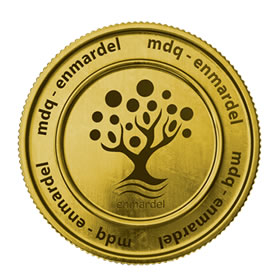
Social Benefits
Trees do more than beautify our cities and communities – they significantly improve the quality of life. According to a study conducted by the University of Illinois, urban areas with more trees are directly linked to lower stress levels and better well-being among residents. In hospitals, it has been proven that patients with views of green spaces recover more quickly after surgery.
Key Statistics:
- A study by TreePeople found that 78% of people feel that trees improve their emotional well-being and quality of life in urban areas.
- In hospital settings, patients recover 20% faster if they have access to views of trees and nature (source: University of Illinois).
The relationship between people and trees is so deep that communities often oppose the cutting of trees in their neighborhoods. The heroic efforts of individuals and organizations to save large or historical trees highlight the symbolic and emotional importance of trees in our lives.
Community Benefits
Even if trees are privately owned, their size and the space they occupy often make them a significant part of the community. With proper selection and maintenance, trees not only enhance a property but also improve the neighborhood without infringing on the rights of neighbors.
Urban trees often fulfill various architectural and engineering roles. They provide privacy, enhance views, or block unwanted ones. They reduce intense light and glare, direct pedestrian traffic, and complement or enhance the architecture of the surrounding area. Additionally, trees provide natural elements and habitats for wildlife in urban environments, improving the quality of life for local residents.
Key Statistics:
- American Forests estimates that urban trees can reduce noise pollution by up to 40% by absorbing traffic noise and other sound sources.
- Trees in streetscapes enhance neighborhood attractiveness, increasing property values by 5% to 20%.
Environmental Benefits
Trees have a profound impact on the urban environment by moderating climate, improving air quality, conserving water, and providing shelter for wildlife. Trees help control the climate by moderating the effects of sun, wind, and rain.
Key Statistics:
- According to the EPA, a single mature tree can absorb approximately 22 kg of CO2 per year, helping to mitigate climate change.
- Urban trees can reduce the temperature in areas around them by 2-9°C, helping to combat the urban heat island effect (source: U.S. Forest Service).
- A study from The Nature Conservancy found that well-maintained trees can reduce cooling and heating costs in homes by up to 25%.
Trees also filter the air we breathe by removing dust and other particles, while rain helps wash pollution into the ground. The leaves absorb carbon dioxide and other pollutants like ozone, carbon monoxide, and sulfur dioxide, releasing oxygen in the process.
Planting trees and shrubs helps restore a more natural, less artificial environment. Birds and other wildlife are drawn to these areas, and the natural cycles of growth, reproduction, and decomposition return, both above and below the ground. This restores the natural harmony with the urban environment.
Fruit trees provide seasonal displays, while also offering shelter for wildlife in the fall.
Economic Benefits
Trees add economic value to properties and communities. Research has shown that homes with trees have higher property values due to the benefits they provide, from reduced energy costs to improved surroundings.
Key Statistics:
- National Association of Realtors has noted that homes with gardens and trees can have a 5% to 20% higher market value than those without greenery.
- According to Urban Green Council, properties with trees can see 30% savings on cooling costs due to the shade trees provide.
The economic benefits of trees are not only direct for homeowners but also indirect for communities. By reducing energy costs and decreasing the need for stormwater infrastructure, cities save billions of dollars annually.
Tree Maintenance
While trees provide significant benefits, they also require investment in maintenance. Initial costs include purchasing and planting the trees, while ongoing costs may include watering, pruning, and fertilizing. However, these costs are offset by energy savings, increased property value, and environmental benefits.
Key Statistics:
- The National Tree Benefit Calculator estimates that a well-maintained tree can provide $1,000 to $10,000 in economic value over its lifetime by reducing energy costs and increasing property value.
PHC Alternative: Professional Plant Health Care (PHC)
Professional tree maintenance is essential to ensure trees continue providing benefits in the long run. The Professional Plant Health Care (PHC) program is designed to ensure the ongoing health of trees and prevent future problems. This program includes initial inspections to identify and address any existing issues, followed by periodic reviews and preventative maintenance to ensure the health and beauty of trees.
Sources:
- TreePeople: “Urban Tree Benefits”.
- University of Illinois: “Psychological Effects of Trees in Hospitals”.
- American Forests: “Impact of Trees on Noise Pollution”.
- EPA: “Environmental Benefits of Trees”.
- The Nature Conservancy: “Reducing Urban Heat with Trees”.
- U.S. Forest Service: “Benefits of Urban Trees for Climate”.
- National Association of Realtors: “Impact of Trees on Property Value”.
